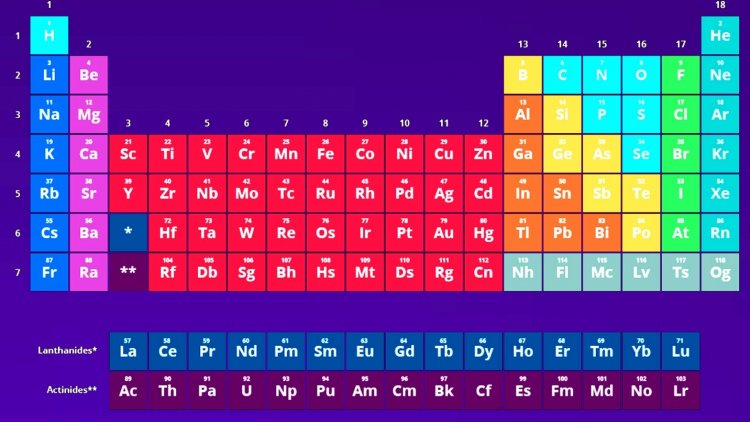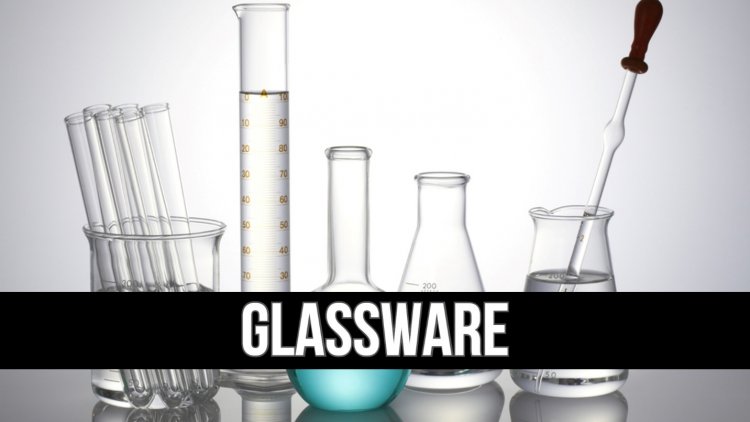The Best Tools and Materials for Chemistry and Chemical Sciences
Chemical sciences materials, like solvents, beakers, and vessels, are some of the essential tools used by chemists to safely experiment with chemicals in their labs.

The Best Tools and Materials for Chemistry and Chemical Sciences udemy course free download
Chemical sciences materials, like solvents, beakers, and vessels, are some of the essential tools used by chemists to safely experiment with chemicals in their labs.
Chemical sciences materials, like solvents, beakers, and vessels, are some of the essential tools used by chemists to safely experiment with chemicals in their labs. As important as they are to chemistry, though, not all materials are created equally.
These chemical science materials are designed to help improve the efficiency and accuracy of a chemist’s experiments in any field within chemical sciences.
Scientific Calculator
A scientific calculator is an essential tool for any chemistry or chemical science student. It allows you to do mathematical operations quickly and accurately with a variety of functions, from trigonometry to logarithms.
To use it properly, your scientific calculator should have at least the following functions: addition, subtraction, multiplication, division and square roots. You can find this kind of calculator in most electronics stores, such as Radio Shack.
Periodic Table
The periodic table is an essential tool in the world of chemical sciences. It gives a general overview of elements, as well as their atomic number, symbol, and weight.
The periodic table also tells you how many electrons are in the outermost shell (the atomic number). This can be very helpful when trying to figure out how elements react with each other.
For example, if there are more than eight electrons in an atom’s outer shell, then that element will be reactive and could not bond with others. If there are fewer than eight, then it will bond easily.
Knowing this information can help you predict whether two elements will form bonds together or not before actually testing them out. Without a doubt, the best way to start studying chemistry and chemical sciences would be by using the periodic table!

Measuring Device
A variety of tools and materials are used in the field of chemistry. One such tool is a measuring device, which measures properties such as mass, volume, or length.
A balance is often used to measure weight while a graduated cylinder can be used to measure volumes. The thermometer is another useful tool when determining the temperature of a substance.
It's important to note that these tools are not exclusive; other devices may be necessary depending on the situation. For example, if you want to calculate the concentration of a solution, you would need to have a chemistry lab at your disposal.
If it was your intention to mix solutions together then different apparatus might be needed such as glassware like pipettes and flasks
Handheld Balance
Some of the best tools used in chemistry experiments are balances. These will measure weight in grams, milligrams, ounces, pounds, or kilograms. Look for one that is reasonably priced, easy to use, and will stay accurate after a few drops on the weighing tray.
Weighing chemicals can also be done with chemistry materials like disposable plastic spatulas, dishes, tweezers, gauze pads, and polypropylene containers.
You'll need chemistry tools like tongs, scissors, thermometers, funnels, clamps, and stirring rods. Make sure you have safety equipment like gloves and goggles as well as lab coats to protect your clothes from spills.
Lab Notebook
Here are the best materials to have in your lab notebook when you're a student or scientist in the field of chemical sciences:
1) Two-ring binder with pockets. You can go fancy or simple, but make sure it has pockets to store loose papers and that it holds up-to-date pages nicely.
2) Paper clips. These will hold together any important sheets of paper that you want as one unit in your notebook.
3) Highlighter pens with colors like yellow, orange, green, and blue (different colors for different uses).
4) Pencils. If you don't care about scribbles showing up on things like test answers later on down the line, then regular pencils are great.
Magnetic Stirring Bars
There are many tools and materials that can be used in a chemistry laboratory. Magnetic stir bars, which can also be called stirring magnets or magnetic stirrers, are one of the most common tools used in chemistry labs around the world.
They are easy to use because they come with a metal rod that is attached to the end of the bar magnet. The metal rod is inserted into either a glass tube or test tube filled with liquids or solids.
Petri Dishes
Chemistry is a complicated field that requires the use of many specialized tools. One of these tools is Petri dishes, which are used to grow cultures in order to isolate cells or organisms.
Petri dishes are made from a type of glass called borosilicate glass, which is easily formed into a dish shape and offers excellent chemical resistance. They come in sizes ranging from 3 cm to 15 cm, with the most common being 10 cm in diameter.
Glassware (Test Tubes, Erlenmeyer Flasks, Beakers, Pyrex Flasks, Vials and Test Tube Racks)
Glassware is a very important tool in chemistry. It is used to contain liquids, solids, and gases. Glassware is manufactured out of either borosilicate or soda-lime glass.
Soda-lime glass is cheaper and more common. Borosilicate glass has better thermal properties because it does not expand at the same rate as other types of glass when heated.
Borosilicate glass also resists chemical corrosion better than soda-lime glass. However, borosilicate glass is considerably more expensive than soda-lime glasses.
Both have their benefits and drawbacks but are usually interchangeable with each other. Chemistry Tool: Bunsen Burner: The Bunsen burner was created by Robert Bunsen and Gustav Kirchhoff in 1854.

Glove Boxes and Hoods
Glove boxes are a common use of chemistry materials. These boxes are often made of polycarbonate, which is transparent. The gloves inside the box will protect you from toxic substances inside the box.
Hoods are another type of chemistry material that is used in labs to protect against toxic substances. They are often made out of metal or glass so that they can be used with very hot substances or dangerous chemicals.
Also Read: Is Basic Industries a Good Career Path
Rubber Tubing and Hose Clamp Connectors
Chemistry tools are materials that are used in chemistry and chemical sciences. These tools can be used to measure volume, weight, mass, density, acidity, or alkalinity.
The Rubber Tubing and Hose Clamp Connectors is a tool that has been specifically designed to fit around a hose so that it can be connected to the other end of the hose. This tool is made from rubber tubing with two clamps on either side.

